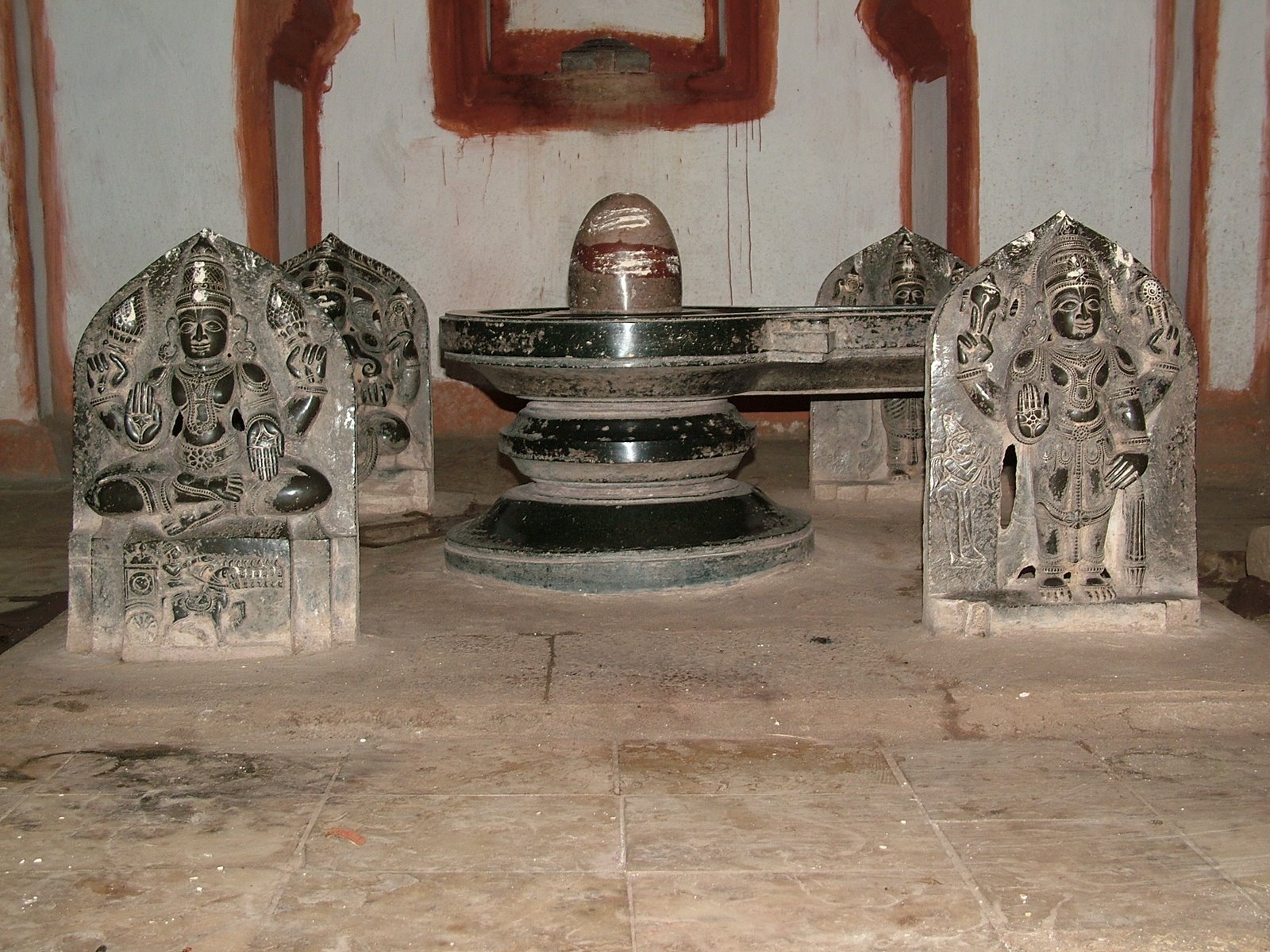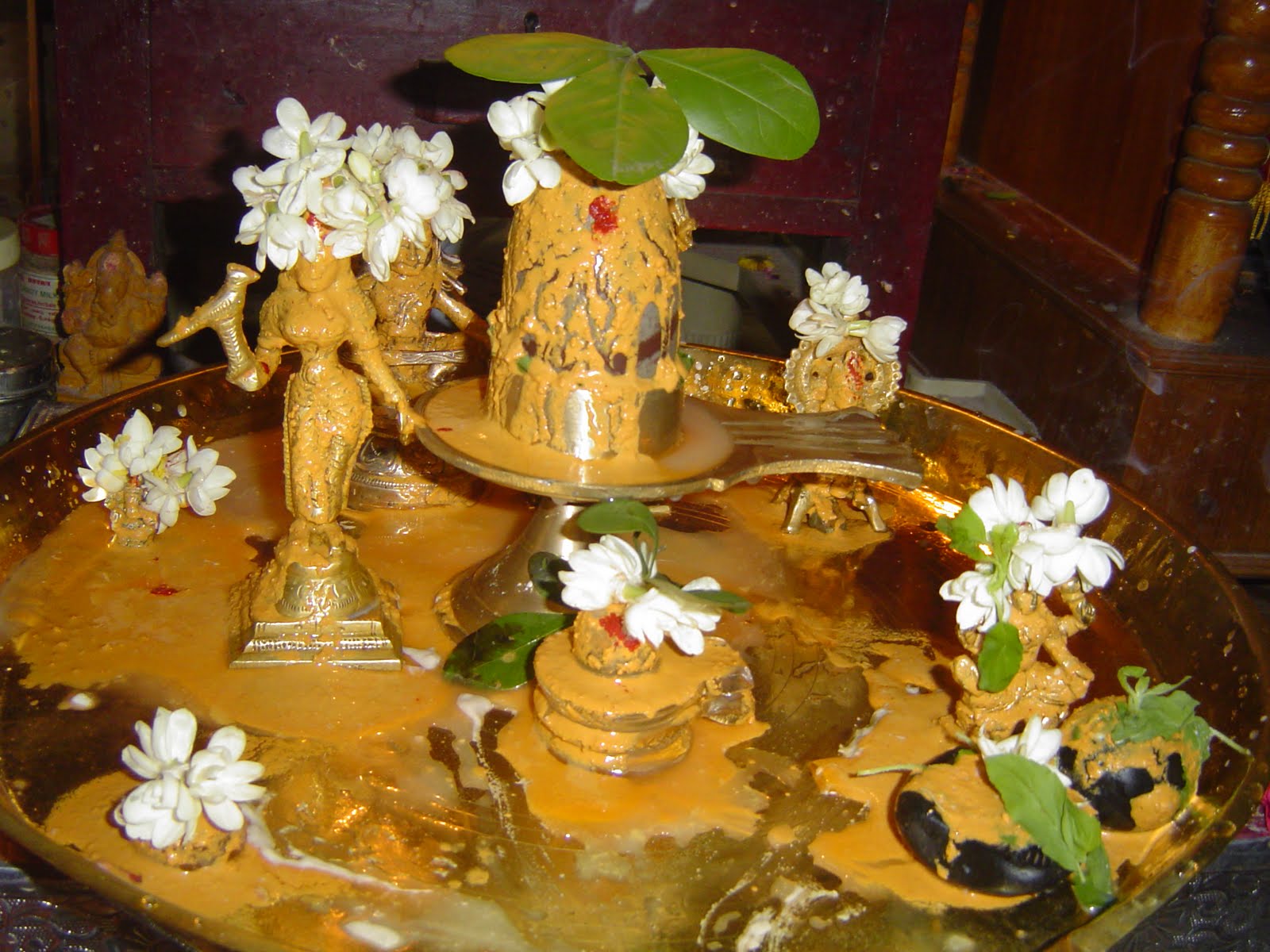Panchayatana puja is the system of worship which was most common in every Brahmin house till few decades ago.
The Panchayatana is a system which consists of the worship of five deities:
"Adityam Ambikaam Vishnum Gananaatam Maheswaram"
Aditya is Lord Surya.
Ambika is Goddess Devi.
Vishnu is Lord Narayana.
Gananaatham is Lord Ganesha.
Maheswara is Lord Shiva.
These five are the great divine force whom every householder worships as pancha devata puja. Based on the tradition followed by the family, one of these deities is kept in the center and the other four around it and worship is offered to all the deities.
Adhi Shankara systemised the Sanatana Dharma(Hinduism) and classified it into broad Six categories.
Shaiva - with Shiva as the Presiding deity
Vaishnava - with Vishnu as the Presiding deity
Shaktha - with Devi as the Presiding deity
Ganapatya - with Ganesha as the Presiding deity
Kaumara - with Subramanya as the Presiding deity
Sowra - with Surya (planets) as the Presiding deity
Deva Puja and Archana is one of the most important duties imposed by the Shastras. The Shastras are filled with details of the Panchayatana puja details and Adhi Shankra only prescribed us to follow it without fail.
The panchayatana scheme represent the five elements:
Akashasyadhipo vishnuh agneshchaiva maheshvari |
vayoh suryah kshiterishah jivanasya ganadhipah ||
Akasha : Space : Vishnu
Vahni : Fire : AmbikA
Vayu : Air : Aditya
kShiti : Earth : Shiva
Jala : Water : Ganapati
All the five deities are not Panchaloka or any other metal idols; But these five are represented by small natural stones found in various parts of India.
Name of Deity : Ganesha
Bhuta(Tatwa) : Apu(Water)
Name of the Stone (Sila) : Red Sonabhadra
Name of the River : Sone
Name of the State where found in India : Bihar
Names of flowers and leaves used for worship : Lotus and Bandook flowers
Name of Deity : Surya(Sun)
Bhuta(Tatwa) : Vayu (Air)
Name of the Stone (Sila) : Crystal
Name of the River : Vallam
Name of the State where found in India : Tamil Nadu (Tanjavur)
Names of flowers and leaves used for worship : Bandook flower and plantain tree
Name of Deity : Vishnu
Bhuta(Tatwa) : Akasha(Space)
Name of the Stone (Sila) : Saligrama
Name of the River : Gandaki
Name of the State where found in India : Nepal
Names of flowers and leaves used for worship : Tulsi (basil), Ashwatha, and Amalaki leaves. Marigold, Punnaga, and yellow flowers
Name of Deity : Shiva
Bhuta(Tatwa) : Prithivi(Earth)
Name of the Stone (Sila) : Banalinga
Name of the River : Narmada (Omkara-kunda)
Name of the State where found in India : Madhya Pradesh
Names of flowers and leaves used for worship : Godlen shower tree Flower ,Bel leaves & Amalaki leaves. Akund (Calotropis gigantea), Crown flower Nagalingam flower
Name of Deity : Ambika(Devi)
Bhuta(Tatwa) : Agni(Fire)
Name of the Stone (Sila) : Swarna Mukhi (Rekha Shila)
Name of the River : Swarnamukhi
Name of the State where found in India : Andhra Pradesh
Names of flowers and leaves used for worship : Red flowers - Hibiscus or China rose and Neem leaves
The image of that particular devata is kept in the centre, surrounded by the other gods. If he is a devotee of Vishnu, he places the idol of Vishnu in the centre with the other idols surrounding it. If he is a devotee of Lord shiva, a lingam is placed in the middle with the other images around it. If he is a devotee of Suryanarayana, he has a sphatika as the central object of worship.

The positioning in the panchayatana poojas are as follows:
Shiva Panchayatana Puja
Shiva at the center
Surya at Southeast
Ganesha at Southwest
Devi at Northwest and
Vishnu at the Northeast.
Ganesha Panchayatana Puja
Ganesha at the center
Vishnu at Northeast
Shiva at Southeast
Surya Southwest and
Devi at Northwest
Vishnu Panchayatana Puja
Vishnu at Center
Shiva at Northeast
Ganesha at Southeast
Surya at Southwest and
Devi at Northwest
Devi Panchayatana Puja
Devi at center,
Vishnu at Northeast,
Shiva at Southeast,
Ganesha at Southwest and
Surya at Northwest
Surya Panchayatana Puja
Surya at Center,
Shiva at Northeast,
Ganesha at Southeast,
Vishnu at Southwest,
Devi at Northwest
Along with this people worshipping Subramanya will include Him in the form of a (silver) Snake or Vel (spear)

Panchayatana Puja is a systematic procedure which involves physical and mental discipline, requires inner and outer cleanliness. This - when done systematically will surely bring the progress in the material world and the final truth - awareness of the true Self. By following it, one obtains the Lord’s Anugraha, without which liberation is not possible.
The Panchayatana is a system which consists of the worship of five deities:
"Adityam Ambikaam Vishnum Gananaatam Maheswaram"
Aditya is Lord Surya.
Ambika is Goddess Devi.
Vishnu is Lord Narayana.
Gananaatham is Lord Ganesha.
Maheswara is Lord Shiva.
These five are the great divine force whom every householder worships as pancha devata puja. Based on the tradition followed by the family, one of these deities is kept in the center and the other four around it and worship is offered to all the deities.
Adhi Shankara systemised the Sanatana Dharma(Hinduism) and classified it into broad Six categories.
Shaiva - with Shiva as the Presiding deity
Vaishnava - with Vishnu as the Presiding deity
Shaktha - with Devi as the Presiding deity
Ganapatya - with Ganesha as the Presiding deity
Kaumara - with Subramanya as the Presiding deity
Sowra - with Surya (planets) as the Presiding deity
Deva Puja and Archana is one of the most important duties imposed by the Shastras. The Shastras are filled with details of the Panchayatana puja details and Adhi Shankra only prescribed us to follow it without fail.
The panchayatana scheme represent the five elements:
Akashasyadhipo vishnuh agneshchaiva maheshvari |
vayoh suryah kshiterishah jivanasya ganadhipah ||
Akasha : Space : Vishnu
Vahni : Fire : AmbikA
Vayu : Air : Aditya
kShiti : Earth : Shiva
Jala : Water : Ganapati
All the five deities are not Panchaloka or any other metal idols; But these five are represented by small natural stones found in various parts of India.
Name of Deity : Ganesha
Bhuta(Tatwa) : Apu(Water)
Name of the Stone (Sila) : Red Sonabhadra
Name of the River : Sone
Name of the State where found in India : Bihar
Names of flowers and leaves used for worship : Lotus and Bandook flowers
Name of Deity : Surya(Sun)
Bhuta(Tatwa) : Vayu (Air)
Name of the Stone (Sila) : Crystal
Name of the River : Vallam
Name of the State where found in India : Tamil Nadu (Tanjavur)
Names of flowers and leaves used for worship : Bandook flower and plantain tree
Name of Deity : Vishnu
Bhuta(Tatwa) : Akasha(Space)
Name of the Stone (Sila) : Saligrama
Name of the River : Gandaki
Name of the State where found in India : Nepal
Names of flowers and leaves used for worship : Tulsi (basil), Ashwatha, and Amalaki leaves. Marigold, Punnaga, and yellow flowers
Name of Deity : Shiva
Bhuta(Tatwa) : Prithivi(Earth)
Name of the Stone (Sila) : Banalinga
Name of the River : Narmada (Omkara-kunda)
Name of the State where found in India : Madhya Pradesh
Names of flowers and leaves used for worship : Godlen shower tree Flower ,Bel leaves & Amalaki leaves. Akund (Calotropis gigantea), Crown flower Nagalingam flower
Name of Deity : Ambika(Devi)
Bhuta(Tatwa) : Agni(Fire)
Name of the Stone (Sila) : Swarna Mukhi (Rekha Shila)
Name of the River : Swarnamukhi
Name of the State where found in India : Andhra Pradesh
Names of flowers and leaves used for worship : Red flowers - Hibiscus or China rose and Neem leaves
The image of that particular devata is kept in the centre, surrounded by the other gods. If he is a devotee of Vishnu, he places the idol of Vishnu in the centre with the other idols surrounding it. If he is a devotee of Lord shiva, a lingam is placed in the middle with the other images around it. If he is a devotee of Suryanarayana, he has a sphatika as the central object of worship.
The positioning in the panchayatana poojas are as follows:
Shiva Panchayatana Puja
Vishnu Devi
Shiva
Surya Ganesha
Shiva at the center
Surya at Southeast
Ganesha at Southwest
Devi at Northwest and
Vishnu at the Northeast.
Ganesha Panchayatana Puja
Vishnu Devi
Ganesha
Shiva Surya
Ganesha at the center
Vishnu at Northeast
Shiva at Southeast
Surya Southwest and
Devi at Northwest
Vishnu Panchayatana Puja
Shiva Devi
Vishnu
Ganesha Surya
Vishnu at Center
Shiva at Northeast
Ganesha at Southeast
Surya at Southwest and
Devi at Northwest
Devi Panchayatana Puja
Vishnu Surya
Devi
Shiva Ganesha
Devi at center,
Vishnu at Northeast,
Shiva at Southeast,
Ganesha at Southwest and
Surya at Northwest
Surya Panchayatana Puja
Shiva Devi
Surya
Ganesha Vishnu
Surya at Center,
Shiva at Northeast,
Ganesha at Southeast,
Vishnu at Southwest,
Devi at Northwest
Along with this people worshipping Subramanya will include Him in the form of a (silver) Snake or Vel (spear)
Panchayatana Puja is a systematic procedure which involves physical and mental discipline, requires inner and outer cleanliness. This - when done systematically will surely bring the progress in the material world and the final truth - awareness of the true Self. By following it, one obtains the Lord’s Anugraha, without which liberation is not possible.